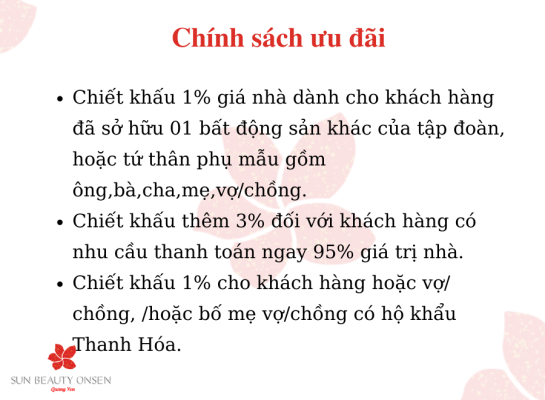- Step boldly into a world of challenges and rewards, where the chicken road game tests your strategy at every twist and turn!
- Understanding the Game Mechanics
- Risk Assessment Strategies
- The Role of Timing in Decisions
- Developing Effective Strategies
- Emotional Management
- Seeking Support and Guidance
- Conclusion
Step boldly into a world of challenges and rewards, where the chicken road game tests your strategy at every twist and turn!
The concept of the chicken road game combines elements of strategy and adventure, offering players an exciting path filled with potential rewards as well as significant risks. Imagine leading a chicken down a winding path, where every step taken can either yield a great reward or bring the risk of losing everything you’ve gained. This game isn’t just about luck; it requires a keen understanding of when to push your luck and when to hold back. Players must decide how far they are willing to go on this exciting journey.
Each turn on this metaphorical road illustrates a choice, with the stakes becoming higher as each step is taken. The notion of crossing into uncharted territory invites players to test their limits and refine their strategic thinking. As the chicken progresses along the path, players must constantly evaluate their position, weighing the possible benefits against the risks involved in advancing further. Ultimately, the goal is to reach an endpoint where you can safely gather your winnings without losing it all to chance.
In addition to strategy, this game emphasizes the importance of timing. A player can be on the cusp of a great reward, but without appropriate timing, that potential can swiftly transform into a total loss. These dynamics make the chicken road game an engaging option for those who thrive on making split-second decisions. It embodies a classic gambling thrill, where risk and reward are intricately intertwined in every movement.
Moreover, the game can be likened to live challenges faced in real life, creating a relatable context for players. Just like navigating through life’s challenges, making wise decisions can lead to success, while reckless moves may result in setbacks. Players are encouraged to develop a thoughtful approach, not just relying on chance, which enriches the experience.
As we delve deeper into the intricacies of the chicken road game, we’ll explore strategies, critical decision-making points, and how to effectively manage risks. Let’s embark on this journey, dissecting the elements that make this game not only challenging but also immensely rewarding.
Understanding the Game Mechanics
The first step to mastering the chicken road game is understanding its basic mechanics. At its core, players are tasked with guiding their chicken down a path, where obstacles and rewards await. Each space the chicken occupies can either hold a surprise benefit or a danger, demanding quick thinking and strategy from the player. The game thrives on the essential balance between risk and safety.
In the landscape of the chicken road game, the idea is simple: as you progress, the potential rewards grow, but so do the dangers. To better illustrate this, consider the following table that outlines possible outcomes based on the player’s choices:
| Move Forward | Increased Reward/Greater Risk |
| Hold Back | Secure Existing Gains/Sacrifice Potential Growth |
| Double Down | High Reward/Risk of Total Loss |
Each choice comes with its unique set of consequences, and players must evaluate their situation before proceeding. Making an informed decision can mean the difference between attaining riches and facing complete loss.
Risk Assessment Strategies
Risk assessment is a crucial element in the chicken road game. Players must be constantly aware of their surroundings, evaluating which paths may lead them to success and which may spell doom. One effective strategy involves increasing one’s awareness of the game’s mechanics. Knowing how each choice influences your progress is key to navigating the labyrinth of options effectively.
Another critical assessment tool is the ability to reflect on previous iterations of the game. However, recognizing patterns and outcomes can prepare players for similar scenarios in future games, thus informing better decisions. By studying risk factors associated with certain paths, players can develop strategies that favor them, maximizing rewards while minimizing dangers.
The Role of Timing in Decisions
Timing in the chicken road game cannot be overstated. Choosing when to move or hold back can have profound impacts on your overall success. The fear of losing it all often prompts hasty decisions, which can be detrimental. Players must learn to control their impulses, waiting for the right moment to advance or secure their gains. Patience can often be rewarded with significant advantages.
Procrastination, on the other hand, can lead to missed opportunities. Balancing these two elements—patience and decisiveness—is fundamental to thriving in this game. The more adept players become at reading the game’s flow, the more they position themselves favorably against the odds.
Developing Effective Strategies
Success in the chicken road game involves more than just random choices; it requires the development of effective strategies. Players are encouraged to think ahead and devise plans that maximize their chances of favorable outcomes. The excitement of the game is amplified when strategic thinking is combined with daring decisions. Analyzing the potential trajectories based on available paths is essential.
Incorporating a thorough approach to analyzing risk can significantly enhance gameplay. Players should adopt strategies such as evaluating past moves, anticipating future opportunities, and aligning choices with their risk tolerance levels. Below is a list of key strategies that can be employed:
- Analyze Past Performance: Reflect on previous games to recognize winning patterns.
- Set Clear Goals: Define what success looks like, facilitating better decision-making.
- Simplifying Choices: Avoid overwhelming options by narrowing focus on the most promising paths.
- Adapt Strategies: Be flexible in your approach, adapting with changing circumstances.
Emotional Management
Managing emotions while playing is another critical component of the chicken road game. Gambling elements naturally evoke excitement and anxiety, which can cloud judgment. Thus, it is essential to maintain a level head throughout the game. In moments of thrill, players may be tempted to make impulsive decisions, which often leads to losses.
Developing emotional resilience becomes paramount. One effective method is to set limits on how much can be wagered or how far one intends to go on the path. By enforcing these boundaries, players can safeguard their success and ensure healthy gameplay.
Seeking Support and Guidance
Another sound strategy involves seeking external guidance and support. Engaging with seasoned players or utilizing community resources can provide invaluable insights and techniques. Sharing experiences and strategies can enhance individual understanding and help players navigate their paths more effectively.
Engaging with others in the community offers learning experiences that can benefit personal gameplay. The exchange of ideas often proves enriching, enhancing the overall enjoyment and mastery of the chicken road game.
Conclusion
The chicken road game offers a fascinating blend of strategy and chance, where players must constantly assess risks against potential rewards. By implementing effective strategies and managing emotions, players can foster a more rewarding experience while minimizing losses. Navigating this game is not just about luck; it’s about honing the decision-making skills that determine success on the path ahead. As you engage with this thrilling challenge, remember: the goal is to not only progress but to know when to step back, avoiding the pitfalls that could lead to losing everything.



























